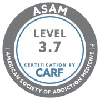If you are familiar with medications that block the effects of opioids, such as Naloxone (Narcan) and Buprenorphine you might have also heard of the effect called precipitated withdrawals. These can play a part in a detox journey but who might need to take medication to save their life in an overdose situation.
Here we will navigate the intricacies, and understand why anyone seeking detox in Orange County, or elsewhere for that matter, should be aware of it.
Understanding Precipitated Withdrawals
Precipitated withdrawals happen when a person, who is dependent on opioids (heroin, fentanyl, carfentanil, Oxycodone, etc) takes medication that is designed to block the effects of opioids. This can lead to an immediate onset of withdrawal symptoms – but here’s the kicker: these symptoms are more severe and rapid than what one would experience during a natural withdrawal process.
Here are the most common occurrences of precipitated withdrawals:
- Overdose situations: In emergency situations involving opioid overdoses, medications like Naloxone (Narcan) are used to reverse the effects of the drug. While naloxone can cause withdrawal symptoms in someone who is addicted to opioids, its life-saving potential in overdose situations definitely outweighs the discomfort of those withdrawals.
- Treatment scenarios: Precipitated withdrawals are actually more commonly seen during treatment attempts. For example, if someone is trying to transition from an opioid like heroin to a medication-assisted treatment (MAT) drug like Buprenorphine (found in Suboxone and Subutex), and they take the Buprenorphine too soon after their last heroin use, it can displace the full agonist opioids from the receptors in the brain, causing rapid and severe withdrawal symptoms.Said a little more plainly, precipitated withdrawals happen in this situation because when the medication takes the “seat” in the brain (the receptor), it doesn’t activate it in the same strong way the previous drug did. This sudden change causes the body to react and show withdrawal symptoms since it was expecting and relying on the stronger effects of the previous drug. It’s like the body saying, “Hey, I was used to this strong effect, and now it’s suddenly gone! What’s happening?”This sudden change and the body’s reaction to it result in withdrawal symptoms.The key is timing; there’s a need to wait until the individual is in mild to moderate withdrawal from their opioid of abuse before starting MAT to avoid precipitated withdrawal.
Precipitated Withdrawals Statistics
- According to a study published in the Journal of Addiction Medicine, a significant number of patients (upwards of 70%) in certain outpatient settings have experienced precipitated withdrawals.
- Individuals seeking detox in Orange County and across the nation are often unaware of the risks associated with precipitated withdrawals. Education on this topic can reduce the risk and improve treatment outcomes.

Why Should You Care About Precipitated Withdrawals?
For anyone battling addiction or supporting a loved one through their journey, understanding the challenges can be a real game-changer. Here’s why you should be wary:
- Severity: The symptoms are more severe than natural withdrawals. We’re talking extreme agitation, anxiety, muscle aches, tearing, runny nose, excessive sweating, and more.
- Duration: Even though they come on quickly, they don’t go away in a hurry. Precipitated withdrawals can last anywhere from a few hours to several days.
- Impact on Recovery: Experiencing such a severe setback can derail one’s commitment to recovery. It can be demoralizing, to say the least.
Knowing about these risks can help individuals and families make informed choices about detox and treatment.
Medications That Might Cause Precipitated Withdrawals:
When we talk about precipitated withdrawals, we’re often pointing a finger at a group of medications called “opioid antagonists.” The primary culprits here are:
- Naloxone (Narcan): This is a medication often used in emergency situations to reverse an opioid overdose. It works by quickly binding to opioid receptors, effectively pushing opioids off these receptors and reversing their effects.
- Buprenorphine (Subutex, Suboxone when combined with naloxone): Buprenorphine is a partial opioid agonist, meaning it binds to opioid receptors but activates them less than full agonists like heroin or oxycodone. If introduced too early during detox, before the other opioids have sufficiently left the system, it can cause these dreaded precipitated withdrawals.
Symptoms of Precipitated Withdrawals:
Precipitated withdrawals are like regular opioid withdrawal symptoms, but they come on faster and can feel much more intense. Here’s what you might expect:
- Physical Symptoms: These can include muscle aches and pains, tremors or shivering, sweating bullets, racing heartbeat, and just feeling out of sorts with fever or chills.
- Gastrointestinal Discomfort: Talking about heavy nausea, vomiting, diarrhea, and abdominal cramps.
- Mood and Emotion: People going through this might experience extreme agitation, irritability, anxiety, or even feelings of depression.
- Sleep Issues: Trouble catching those Z’s, which means insomnia, or even yawning excessively during the day.
- Flu-like Symptoms: Running nose, teary eyes, and sneezing.
To put it simply, it feels like the worst flu you’ve ever had but magnified.
If you or someone you know is considering medications as a part of opioid detox or treatment, make sure you are under the supervision of medical professionals. They’ll ensure medications are administered correctly, and if there’s any sign of precipitated withdrawal, they’ll know what to do.

Navigating the Complex Landscape of Addiction Treatment
It’s crucial, that we approach addiction with an open mind and a well of knowledge. As many of you know, I always advocate for understanding and compassion. If you or a loved one is seeking detox in Orange County, it’s essential to work with professionals who can guide you safely through the process, minimizing the risk of precipitated withdrawals.
A successful detox journey should be:
- Personalized: Every individual is different, and so is their journey with addiction. A one-size-fits-all approach simply won’t cut it.
- Informed: Knowledge is power. Being aware of terms like precipitated withdrawals and understanding the nuances can ensure that you or your loved one are on the right track.
- Supported: It’s not just about the physical detox. Emotional and psychological support is paramount. We often underestimate the power of a supportive environment, but I cannot stress this enough.
Wrapping It Up
Addiction is a battle, but it’s one that can be won with the right support, knowledge, and determination. Precipitated withdrawals might sound like a daunting term, but by understanding it, you’re arming yourself with the knowledge to navigate the complex landscape of addiction treatment. Remember, every storm runs out of rain. Equip yourself, be vigilant, and keep pushing forward.
Call Saddleback Recovery Today
If you’re looking for a safe place to start or continue your recovery journey, consider seeking detox in Orange County. Surround yourself with professionals and a supportive community that can guide you every step of the way. Take care of yourself and remember, there’s no shame in asking for help. Reach out to Saddleback Recovery, a leading alcohol and drug detox center in Costa Mesa, CA. Let’s face the challenge head-on, together.
Call now: (877) 843-5724.








